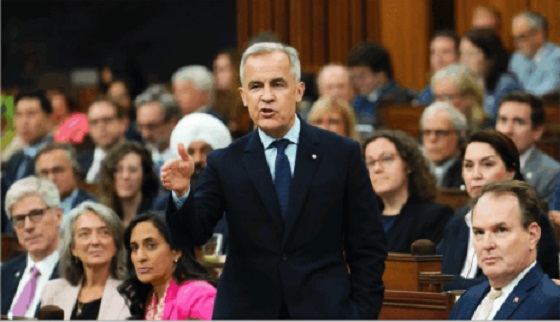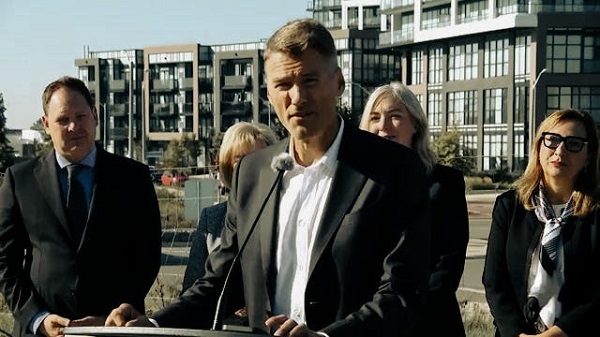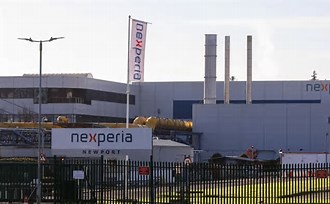Business
Mark Carney’s Fiscal Fantasy Will Bankrupt Canada

By Gwyn Morgan
Mark Carney was supposed to be the adult in the room. After nearly a decade of runaway spending under Justin Trudeau, the former central banker was presented to Canadians as a steady hand – someone who could responsibly manage the economy and restore fiscal discipline.
Instead, Carney has taken Trudeau’s recklessness and dialled it up. His government’s recently released spending plan shows an increase of 8.5 percent this fiscal year to $437.8 billion. Add in “non-budgetary spending” such as EI payouts, plus at least $49 billion just to service the burgeoning national debt and total spending in Carney’s first year in office will hit $554.5 billion.
Even if tax revenues were to remain level with last year – and they almost certainly won’t given the tariff wars ravaging Canadian industry – we are hurtling toward a deficit that could easily exceed 3 percent of GDP, and thus dwarf our meagre annual economic growth. It will only get worse. The Parliamentary Budget Officer estimates debt interest alone will consume $70 billion annually by 2029. Fitch Ratings recently warned of Canada’s “rapid and steep fiscal deterioration”, noting that if the Liberal program is implemented total federal, provincial and local debt would rise to 90 percent of GDP.
This was already a fiscal powder keg. But then Carney casually tossed in a lit match. At June’s NATO summit, he pledged to raise defence spending to 2 percent of GDP this fiscal year – to roughly $62 billion. Days later, he stunned even his own caucus by promising to match NATO’s new 5 percent target. If he and his Liberal colleagues follow through, Canada’s defence spending will balloon to the current annual equivalent of $155 billion per year. There is no plan to pay for this. It will all go on the national credit card.
This is not “responsible government.” It is economic madness.
And it’s happening amid broader economic decline. Business investment per worker – a key driver of productivity and living standards – has been shrinking since 2015. The C.D. Howe Institute warns that Canadian workers are increasingly “underequipped compared to their peers abroad,” making us less competitive and less prosperous.
The problem isn’t a lack of money; it’s a lack of discipline and vision. We’ve created a business climate that punishes investment: high taxes, sluggish regulatory processes, and politically motivated uncertainty. Carney has done nothing to reverse this. If anything, he’s making the situation worse.
Recall the 2008 global financial meltdown. Carney loves to highlight his role as Bank of Canada Governor during that time but the true credit for steering the country through the crisis belongs to then-prime minister Stephen Harper and his finance minister, Jim Flaherty. Facing the pressures of a minority Parliament, they made the tough decisions that safeguarded Canada’s fiscal foundation. Their disciplined governance is something Carney would do well to emulate.
Instead, he’s tearing down that legacy. His recent $4.3 billion aid pledge to Ukraine, made without parliamentary approval, exemplifies his careless approach. And his self-proclaimed image as the experienced technocrat who could go eyeball-to-eyeball against Trump is starting to crack. Instead of respecting Carney, Trump is almost toying with him, announcing in June, for example that the U.S. would pull out of the much-ballyhooed bilateral trade talks launched at the G7 Summit less than two weeks earlier.
Ordinary Canadians will foot the bill for Carney’s fiscal mess. The dollar has weakened. Young Canadians – already priced out of the housing market – will inherit a mountain of debt. This is not stewardship. It’s generational theft.
Some still believe Carney will pivot – that he will eventually govern sensibly. But nothing in his actions supports that hope. A leader serious about economic renewal would cancel wasteful Trudeau-era programs, streamline approvals for energy and resource projects, and offer incentives for capital investment. Instead, we’re getting more borrowing and ideological showmanship.
It’s no longer credible to say Carney is better than Trudeau. He’s worse. Trudeau at least pretended deficits were temporary. Carney has made them permanent – and more dangerous.
This is a betrayal of the fiscal stability Canadians were promised. If we care about our credit rating, our standard of living, or the future we are leaving our children, we must change course.
That begins by removing a government unwilling – or unable – to do the job.
Canada once set an economic example for others. Those days are gone. The warning signs – soaring debt, declining productivity, and diminished global standing – are everywhere. Carney’s defenders may still hope he can grow into the job. Canada cannot afford to wait and find out.
The original, full-length version of this article was recently published in C2C Journal.
Gwyn Morgan is a retired business leader who was a director of five global corporations.
Business
“Nation Building,” Liberal Style: We’re Fixing a Sewer, You’re Welcome, Canada

Ottawa held a full-blown press conference to announce they unclogged a pipe in Toronto and called it a generational housing strategy.
You probably didn’t hear much about it unless you were watching Canadian state media but this morning, the Liberal government held a press conference in Toronto. It was billed as a “generational investment” in housing. That’s the phrase they used. In reality, it was a sewer project.
Gregor Robertson, the former mayor of Vancouver and now the federal minister of housing and infrastructure, stood beside Toronto Mayor Olivia Chow and a cluster of Liberal MPs to announce that Ottawa is spending $283 million to upgrade the Black Creek trunk sewer line. That’s a pipe. A very old pipe. And according to Robertson, that investment will “unlock” the construction of up to 63,000 new homes in the Downsview area.
If that sounds suspiciously like taking credit for doing your job, maintaining the basic infrastructure cities rely on, that’s because it is. No one has ever accused the Liberals of missing an opportunity to repackage civic maintenance as a national moral crusade. The sewer line is 65 years old. It overflows during storms. It’s been a known problem for decades. Fixing it is not bold housing policy. It’s plumbing.
But the political optics are irresistible. The Trudeau Liberals, now under the leadership of Mark Carney are desperate for a win on housing. Their record is catastrophic. Home prices have doubled. Rents have soared. Entire generations of Canadians have been priced out of ownership and locked into permanent renter status. And the architects of that disaster are now flying around the country handing out ribbon-cutting ceremonies and calling it reform.
Today’s announcement also included the unveiling of the first project under a brand-new federal housing agency, Build Canada Homes. Never heard of it? That’s because it didn’t exist until a few weeks ago. And who’s running it? None other than Ana Bailão a Liberal operative and former Toronto city councillor who spent years helping make the city unaffordable in the first place. Now she’s being rewarded with a cushy federal appointment, tasked with building modular housing and handing out contracts on public land.
And what exactly is Build Canada Homes building? Today, they’re launching 540 homes. Not 63,000… 540. Factory-built units that will be delivered at some undefined point in the future. That’s the big federal breakthrough. A housing crisis affecting millions of Canadians, and Ottawa’s answer is five hundred and forty modular homes in Downsview.
This is the pattern every time. The government breaks something, calls it a crisis, and then demands credit for fixing a fraction of it with your money. The numbers are staggering. According to the Parliamentary Budget Office, Canada needs 3.1 million more homes by 2030 to restore affordability. That means building over 430,000 units per year. Right now, we’re building maybe half that. The backlog gets worse every year. But today, we’re supposed to celebrate because they’re unclogging a sewer and firing up a couple prefab builds on federal land.
No one in the press asked the obvious question: why aren’t private builders constructing the 300,000 units that Toronto has already zoned and approved? Because they can’t. The financing doesn’t work. The cost of materials is too high. Interest rates have crippled developers. And cities like Toronto still impose hundreds of millions of dollars in fees, development charges, and bureaucratic red tape. That’s the real bottleneck. Not the sewer. And here’s what they definitely won’t say out loud: Canada’s housing disaster is not just about supply. It’s about demand, turbocharged by one of the fastest immigration intakes in the Western world. The Bank of Canada has warned repeatedly that immigration targets, set without any link to housing capacity — have blown demand wide open and put relentless upward pressure on rents and home prices.
Mayor Chow admitted it herself, sort of. She said the city has thousands of units ready to build but no takers. And instead of confronting the root causes, monetary policy, taxes, regulatory insanity, the government announces a pilot project and tells you to be grateful. That’s how disconnected they are from reality. They’ve regulated housing out of reach and now they’re posing for photos on a construction site, pretending to be the solution.
And just in case there was any lingering doubt about how deep this failure runs, Statistics Canada released its latest building permit numbers this morning and the trend is exactly what you’d expect in a country where the government makes building homes all but impossible.
The total value of building permits dropped again in August down $139 million to $11.6 billion. Residential permits alone fell 2.4%, driven by steep declines in Ontario and Alberta, the very provinces with the most acute housing needs. Single-family permits fell off a cliff — down more than 10% year-over-year. That’s not a slowdown. That’s a stall.
Meanwhile, British Columbia and Quebec where government intervention is particularly heavy barely managed to offset the damage. The number of new dwellings authorized actually shrank month over month. And this is happening in the middle of a so-called national housing push.
StatsCan didn’t sugarcoat it. They didn’t blame foreign investors or greedy landlords or some phantom market force. They just showed the raw data: Permits are falling. Housing starts are lagging. Builders are retreating.
So let’s just pause here and appreciate the sheer absurdity of what we witnessed. A parade of officials, flanked by branded podiums and tax-funded media handlers, standing in front of a construction site to announce, with straight faces, that they are upgrading a sewer line. And for this, we are told we are “building Canada strong.” Really? That’s the pitch? Fixing basic municipal plumbing is now a nation-building moment?
No! Let’s be clear, you’re not building Canada strong. You’re doing your job. A sewer upgrade in Toronto is not some heroic act of visionary leadership. It’s literally maintenance. It’s what functioning governments are supposed to do, quietly, competently, without a six-camera press choreography and a round of applause from party MPs.
But in Liberal Carney Canada the bar has been lowered so dramatically that simply clearing a permit backlog and patching old infrastructure is treated like a moon landing. They break the system, congratulate themselves for patching one pipe, and expect gratitude.
If you want praise for fixing aging civic infrastructure, something cities used to handle without a national press event, then that tells us everything. It tells us the Liberal government has become so hollow, so addicted to performance politics, that maintenance is now treated as achievement. That’s how far we’ve fallen in just ten years.
They didn’t rebuild a nation. They didn’t launch a housing renaissance. They unclogged a sewer, and are now demanded a standing ovation. And that, in a single image, is modern Liberal Canada: the total collapse of standards, repackaged as progress and sold back to you at full price.
Canadians don’t need more press conferences. They need homes, dignity, and a government that works without constant applause. And if unclogging a pipe is what passes for leadership now — then God help the country.
Subscribe to The Opposition with Dan Knight .
For the full experience, upgrade your subscription.
Business
Finance Committee Recommendation To Revoke Charitable Status For Religion Short Sighted And Destructive

From the Frontier Centre for Public Policy
A new report from the Frontier Centre for Public Policy warns that proposed changes to Canada’s Income Tax Act could have devastating consequences for churches and faith-based organizations nationwide.
Revoking the Charitable Status for the Advancement of Religion: A Critical Assessment, by senior fellow Pierre Gilbert, responds to the 2025 Standing Committee on Finance’s recommendation to remove “advancement of religion” as a recognized charitable purpose.
If adopted, the measure could strip churches, mosques, synagogues, temples and religious charities of their charitable status. The impact would include the loss of income tax exemptions and the inability to issue charitable tax receipts. They could also face a one-time penalty tax that effectively wipes out most of what they own.
“The committee’s recommendation, driven by lobbying from the BC Humanist Association, represents a direct threat to religious freedom and the vital role faith communities play in Canadian society,” said Gilbert. “Religious organizations contribute an estimated $16.5 billion annually to Canada through social services, education, community programs and cultural preservation. Revoking their charitable status would be both fiscally shortsighted and socially destructive.”
The report traces the origins of charitable status in English common law, examines the rise of secularism and fiscal pressures driving the proposed change, and calls on churches to proactively respond through education, advocacy and reasserting their public mission.
Download full PDF here. (30 pages)
-

 Alberta19 hours ago
Alberta19 hours agoFact, fiction, and the pipeline that’s paying Canada’s rent
-

 2025 Federal Election1 day ago
2025 Federal Election1 day agoProtestor Behind ‘Longest Ballot’ Chaos targeting Poilievre pontificates to Commons Committee
-

 Business1 day ago
Business1 day agoUN, Gates Foundation push for digital ID across 50 nations by 2028
-

 COVID-192 days ago
COVID-192 days agoThe Trials of Liberty: What the Truckers Taught Canada About Power and Protest
-

 Brownstone Institute1 day ago
Brownstone Institute1 day agoTrump Covets the Nobel Peace Prize
-

 International1 day ago
International1 day agoHamas releases all living hostages under Trump peace plan
-

 Business1 day ago
Business1 day agoTruckers see pay surge as ICE sweeps illegal drivers off U.S. highways
-

 Business1 day ago
Business1 day agoNetherlands Seizes Chinese-Owned Chipmaker in Unprecedented Security Move








